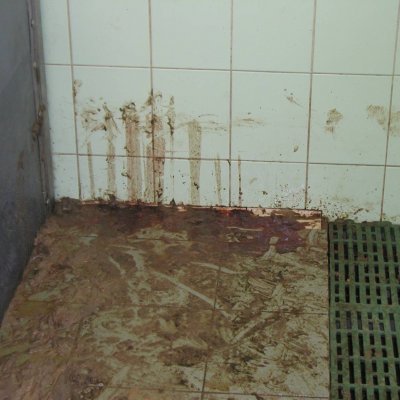Protection against the introduction of new diseases
Protection against the introduction of new diseases

Firstly, it is necessary to emphasize the fact that no breeder or veterinarian should forget. A survey conducted by Pfizer in 61 countries around the world (including the Czech and Slovak Republics) showed that the diseases of individual livestock species are similar on all continents. We also know that there are holdings that can maintain good animal yield and also resist the outbreak of new diseases in the long term. On the contrary, there is a large number of farms that face unexpected increases in mortality and regular introduction of new pathogens in a long term. Many such farms also ceased to be profitable due to this fact and unfortunately have not been able to cope with unfavourable purchase prices of animals in the long term. Why is it so?
There is no simple answer to this question. On the one hand, it cannot be denied that, with the increasing concentration of animals, the infectious pressure also rises proportionally, which can be expressed on the floor of the stable (partly also in the trough), in total number of microorganisms of up to 10 x 109 KTJ/cm2! In the presence of animals, there are approximately 1 x 106 KTJ/m3 in the hall air. Of this, up to ½ is formed by fungi in stables with bedding. Due to high-pressure washing above 120 bar, the feed bins are contaminated. Such concentrations considerably exceed the infectious doses that “occupy” the animal's immune system to such an extent that even a relatively low concentration of other pathogenic microorganisms causes high losses. On the other hand, the employees, but often also the owners of the farms, behave incredibly heedlessly and risky with respect to zoohygiene. They increase the costs because of improper curing and pay less attention to preventive health care measures. Even the best vaccination program cannot be successful without good zoohygiene (see Table 1 a, b).
At a time when in the immediate vicinity of our country (see the table 2) or directly in our farms, dangerous infections are increasingly appearing, which even without immunosuppression of livestock manifest in high intermittence or mortality (outbreaks of classical swine fever, bird flu, etc.), it is necessary to prevent any possible introduction of diseases.
Table 2:
Clinically proven prevalence of classical swine fever in Europe 2004-2008:
STATE, YEAR,
Bosnia and Herzegovina
Bulgaria
France
Hungary
Germany
Romania
Russia
Slovakia
Serbia
TEKROCID, biosecurity program by Tekro, implements such measures on farms that reduce risk behaviour. They prevent the introduction of infection, but also significantly reduce the possible spread of microorganisms among animals or halls.
Basic measures that should be routinely followed by each breeder:
• All measures should be taken so as to protect animal health.
• To incorporate newly purchased animals through a separate quarantine stable.
• To establish and control transport throughout the farm.
• To create strict categories of animals and properly stable them.
• To avoid direct contact of groups or excessive concentration of animals in the section.
• To reduce the transmission of microbes (waste, needles and veterinary instruments, employees)
• To avoid animal stress (high concentration of microbes causes the greatest stress of the immune system).
• To implement low-pressure washing of stables.
• To wash and disinfect regularly with officially certified Tekrocid products for stables.
• Do not use disinfectants containing toxic, carcinogenic and mutagenic substances in the presence of animals (formaldehyde, glyoxal, phenol, cyanides).
• To observe concentrations and dosing of disinfectants, check disinfection realization.
• To clean and disinfect the watering system and feed bins.
• To regularly perform professional disinfestation and deratization measures.
• To create strict rules for visitors.